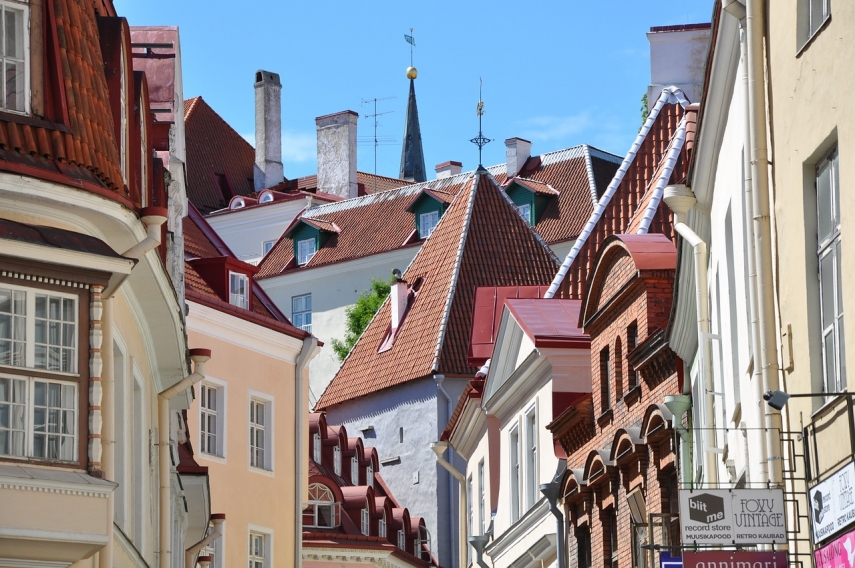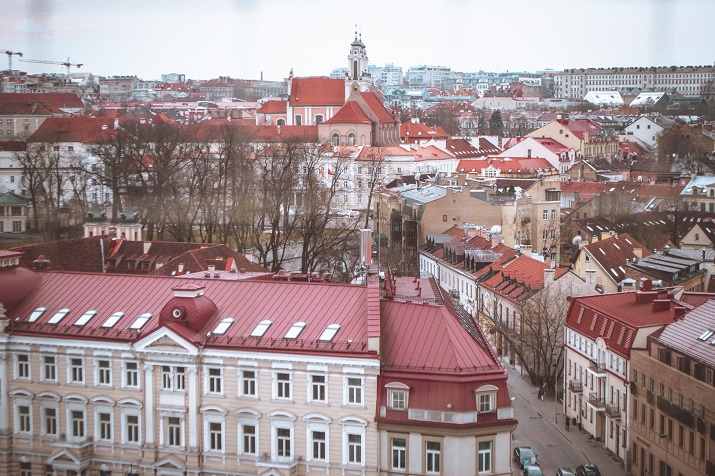A sunny beach house in Portugal or a luxury flat in Brussels? Europe offers plenty of unique places to live and work. When you want to sell or buy, you want to ensure the price is right. Where are real estate prices rising the fastest?
The good news for homeowners is that house prices in the EU have steadily increased in the past decade - which is not fantastic for your bank account if you’re not yet on the property ladder.
The European Commission’s research examined both rents and house prices between 2010 and 2022. According to the data, the cost of buying new property increased by 45%, and from 2015 onwards, this growth has fastened. Even during the pandemic, the European property market maintained positive growth, driven by ultra-low interest rates and increased demand.
Eastern and Central Europe leading the charge
The latest figures by Eurostat show that fifteen countries recorded an annual increase in real estate prices in the third quarter of 2022. But where were price rises at their highest? The answer takes you to Eastern Europe, from Tallinn’s old town to the beautiful Lithuanian countryside.
Estonia
Estonia recorded the highest increase at 24.2%. Tallinn, the capital city, performed exceptionally well, helping real estate prices increase across the country. If you wanted to shop for real estate in Tallinn, you would have paid over €2,300 per square metre, on average. Tallinn is a great place to live, with the capital city offering functional transport links elsewhere. You could even travel to the Finnish capital in around two hours!
But Estonians are moving to more than just the big cities. Summer cottages have always featured heavily in homeowners’ dreams in the country. After the pandemic, many looked to buy a property with more space or a plot for a little cottage by the lake. At the start of 2022, you would need to pay €1,822 per square metre nationwide, on average. In September last year, the median house transaction price stood at €63,000.
Hungary
If seaside nations aren’t your thing, you could turn your attention to beautiful Central Europe. Hungary also continued its substantial real estate price growth. The annual growth during the third quarter reached 21%, and Hungary’s property market has been among the hottest for a decade. The eastern part of Budapest has seen its prices grow the fastest, showing capital cities’ attractiveness across the continent.
Hungarians have an appetite for both second-hand and new homes. High demand and lack of supply are the main drivers behind much of the real estate price increases in the country. Construction in the country hasn’t met the demand in the past few years, so residents have been willing to fork out higher property prices.
Interestingly, Hungary has attracted lots of foreign buyers in the past decade. Foreign buyers in the country tend to prefer houses in the capital city, which is one of the main reasons behind the vast price difference between Budapest and other parts of the region.
Lithuania
Estonia and Hungary were the only countries with an annual growth rate above 20%, and Lithuania got relatively close with 19.3%. The country’s real estate market reached record levels in 2021 and continued its strong growth in 2022. Once again, the capital city had the highest prices overall, although prices there grew slower.
Home prices in Vilnius increased for second-hand and new homes. But Lithuania’s second-hand market has been incredibly buoyant. Apartment prices in the secondary market grew by 10%, according to Delfi reports.
At the start of the year, on average, you would need to spend €2,158 per square metre to buy a house in Vilnius. Prices increased even faster in Kaunas, although you didn’t need to spend as much for an apartment there. During the first half of 2022, an apartment cost approximately €1,506 per square metre in the city.
Lithuanian house prices are still far from the enormous growth they witnessed between 2002 and 2006. The average price of old apartments in Vilnius rose by 275% in this period. Like in most places in Europe, prices plunged after the financial crash in 2008 before beginning their latest drive.
London’s real estate prices are still growing
Outside of the eurozone, the UK saw its house prices increase by 9.8% year-on-year in December 2022. Real estate across the region had been on a steady rise, although prices have not been going up anywhere near that in the above three nations.
But the capital city of London continued the trend of growing real estate prices. In London, people are going after houses rather than flats. The average house price increased by 15% to £687,621 (around €781,000), compared to flats growing only by 3.5% to £409,812 (around €465,000).
Getting on the property ladder
House price increases in big cities combined with the slow supply of new homes mean that rental prices in European cities have also been climbing. London, Luxembourg and Dublin are the region’s most expensive capitals for one-bedroom flat rentals. Even in Brussels, you must spend 41% of the median wage for a one-bedroom apartment.
House price increases vary a lot in Europe, and getting into the property ladder is different from country to country. Eurostat’s data shows that it can take over 20 years on average wages to buy a flat in Prague, Bratislava and Paris. But those in Dublin, Brussels and Nicosia could step on the property ladder in less than 10 years.
Getting on the property ladder in Europe can be a challenge depending on where you want to move. But where do people want to move to?
The Expat Insider 2022 revealed Portugal to be a favourite, offering sunshine and good social life. However, Portuguese bureaucracy pulled the country down in overall rankings - getting your foot on the property ladder is a challenging task!
An uncertain future for European real estate prices
The future might look less rosy in Europe. Hungary (25%), Lithuania (20%), and Estonia (17.5%) all had the highest inflation in the EU at the end of the year. They all had much higher rates than the European average of 10.4%.
Even with fast-rising inflation rates, the cost of living was climbing at a rate that could eat into any earnings from selling a property. Inflation rate increases have also pushed interest rates up, and experts are warning that house prices could stall or even decline.
The latest Fitch Ratings’ Global Housing and Mortgage Outlook suggests Danish home prices could fall by up to 10% in 2023. The drop is the most significant forecasted decline in Europe, followed by the UK, with a predicted decline of 5% to 7% and 4% to 6% in the Netherlands.
The real estate price decline was already evident during the final few months of 2022. In Estonia, real estate price growth stopped in October as sellers began to slash prices. But not everyone believes the market is heading to a sudden crash. Some RE pundits believe that Lithuanian markets could see some newly built housing continue increasing in price.
The fast-growing real estate prices might be a thing of the past. But it’s still worth exploring the European markets. If you’re looking to snatch a cheap property, this might be the year to do so. And if you’re looking to sell, the time might be to hold on.





